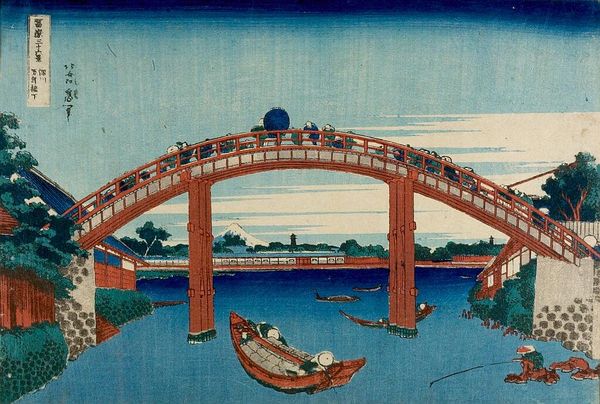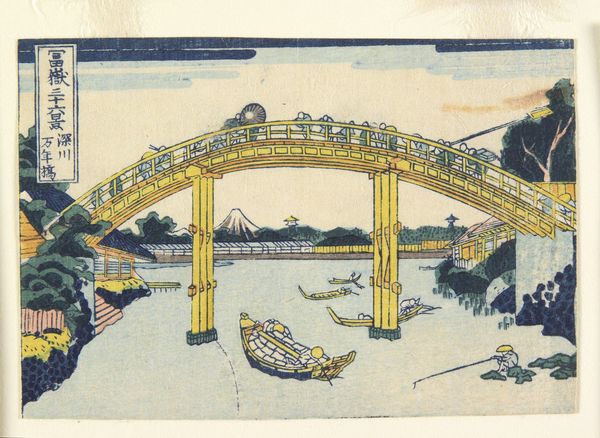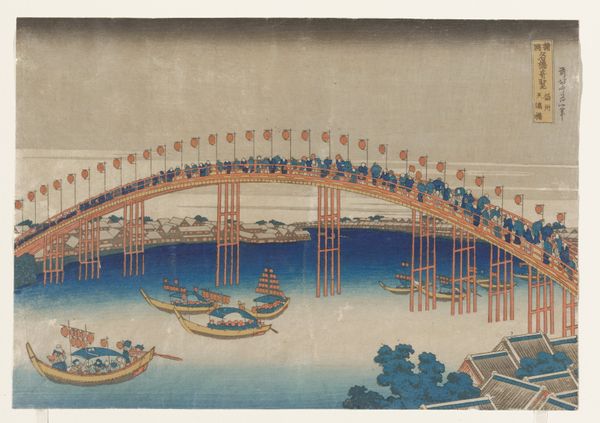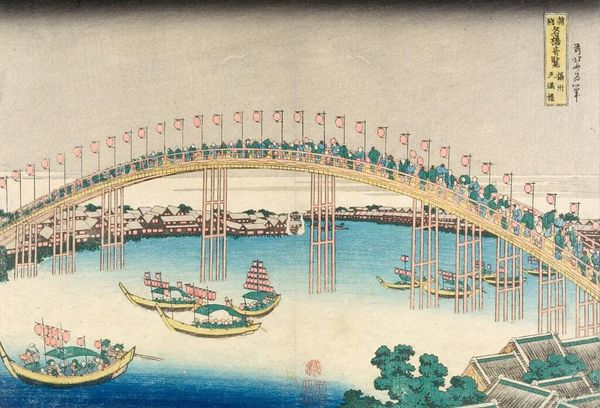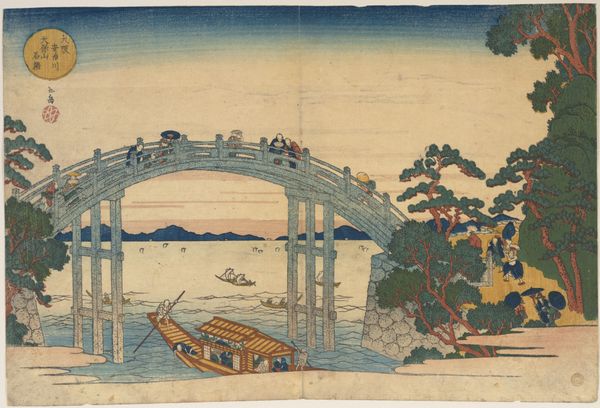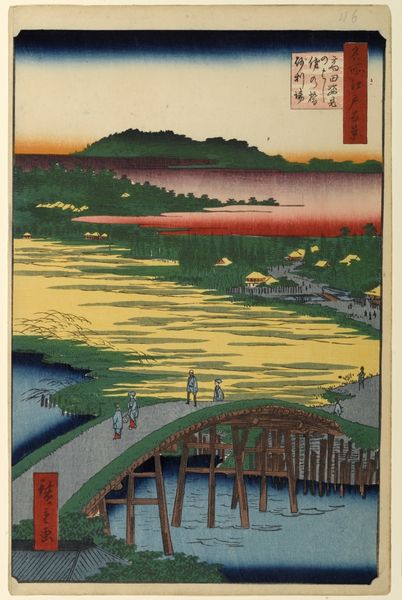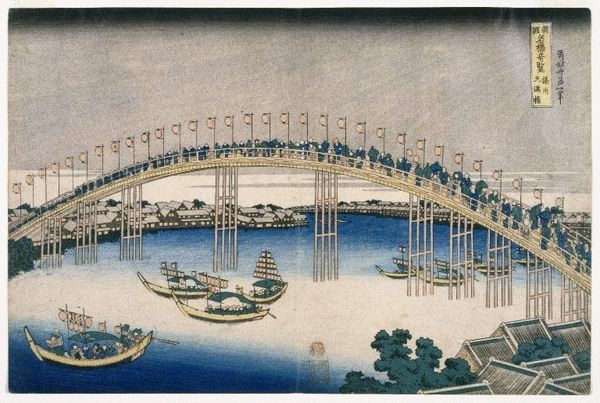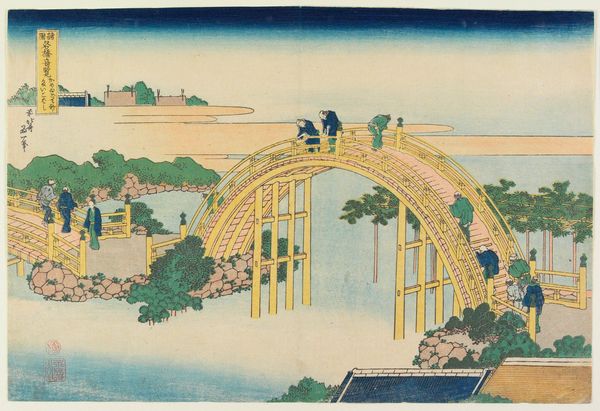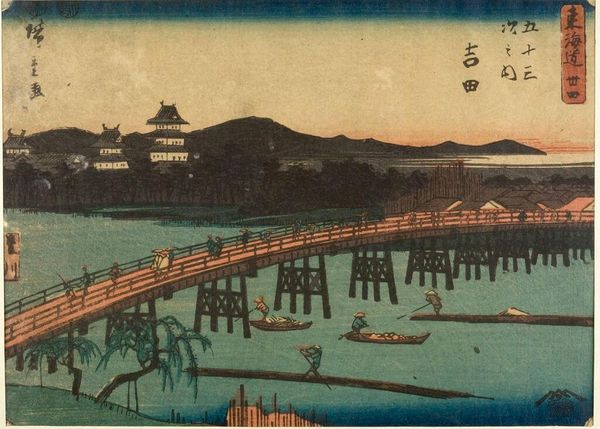
print, woodblock-print
# print
#
asian-art
#
landscape
#
ukiyo-e
#
woodblock-print
#
cityscape
Copyright: Public domain
Editor: Here we have Hokusai's "Fuji seen through the Mannen bridge at Fukagawa," a woodblock print. It's so striking how Mount Fuji is framed by the bridge. What is your take on this composition? Curator: Hokusai masterfully uses the bridge, a symbol of connection and transition, to frame Fuji, a sacred icon. Think about the socio-political context: The Edo period was marked by strict social hierarchies, and art like this offered a glimpse of idealized harmony. But who is included in that harmony? The people on the bridge are intentionally small and anonymous. What does that suggest about their agency, or lack thereof? Editor: That's a good point; they seem like just part of the landscape, like the boats. So the bridge doesn’t connect all people equally, then? Curator: Exactly! It makes us consider: Who had access and who was excluded during that era? The 'floating world' depicted wasn't accessible to everyone. Hokusai is not just showing a beautiful scene. He's also reflecting, perhaps even critiquing, the social dynamics of his time, through the lens of Japonisme, and in so doing influencing impressionism. The way he flattened perspective and used bold lines helped inspire Western artists to question their own traditions. Editor: I see. So this print isn't just about aesthetics, but about power, access, and cultural exchange? Curator: Precisely! By juxtaposing the everyday life of the city with the ever-present symbol of Fuji, Hokusai prompts us to consider our relationship to both nature and society. It’s a dialogue between the ephemeral and the eternal, filtered through the constraints and opportunities of the Edo period. Editor: Wow, I never thought of it that way. I guess I learned to see bridges in art in a new light. Curator: And hopefully to think about who is building those bridges, and who they are really for.
Comments
No comments
Be the first to comment and join the conversation on the ultimate creative platform.
